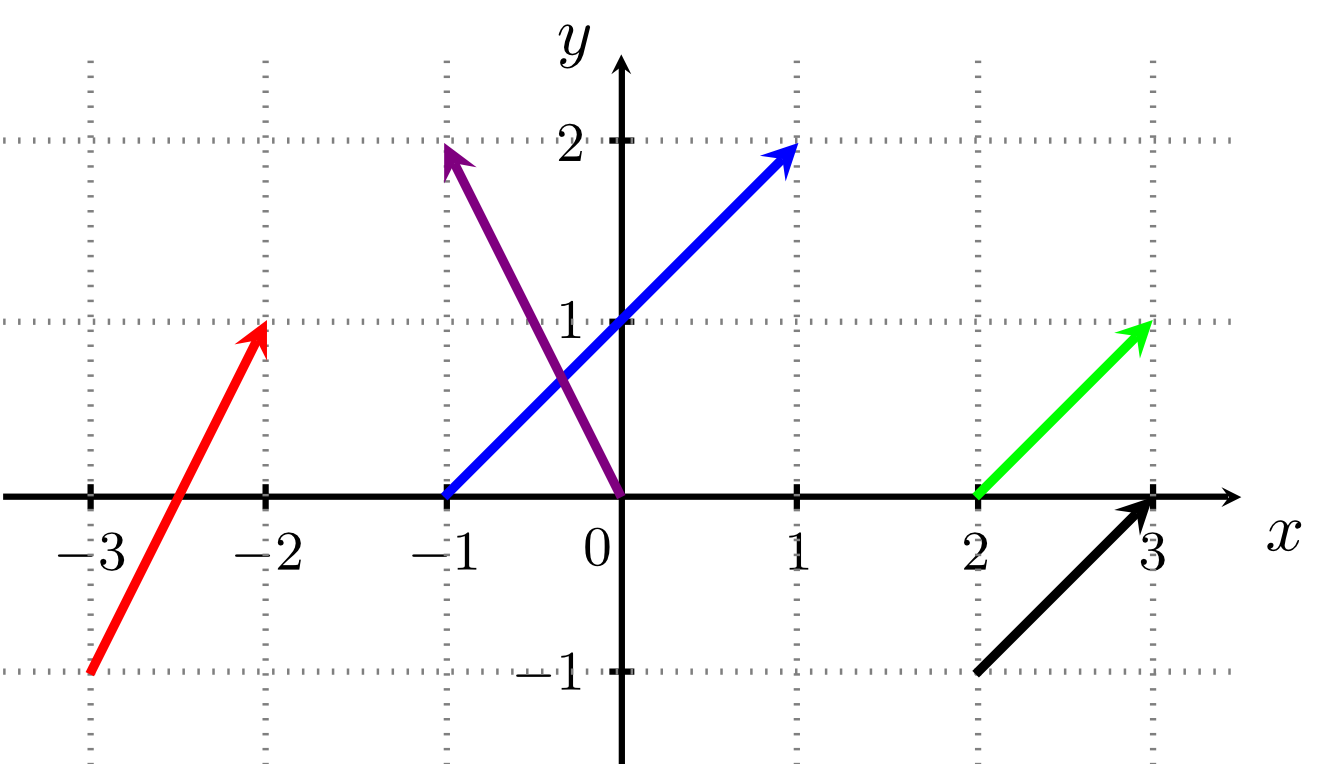Chapter 10 Basic Concepts of Descriptive Vector Geometry
Section 10.3 Final Test10.3.1 Final Test Module 10
This is a test for submission:- Unlike open exercises, no hints for formulating mathematical expressions are provided.
- The test can be restarted or interrupted at any time.
- The test can be terminated and submitted using the buttons at the end of the page, or reset.
- The test can be attempted several times. Only the last version will be included in the statistics.
Exercise 10.3.2
In still air conditions, a sports aircraft can fly with a velocity of 150 kilometres per hour due south. However, a crosswind blowing from the west with a velocity of 30 kilometres per hour causes the plane to drift. Represent the velocity of the aircraft as the sum of two vectors in the plane, where the second component corresponds to the north-south-direction (positive values for north) and the first component corresponds to the east-west-direction (positive values for east). Drop the unit of measure (kilometres per hour) in your calculation:
- In still air conditions, the velocity is .
- The wind causes an additional velocity of .
- The drifting aircraft has in total the velocity vector .
- The length of this vector (absolute value of the velocity) is .
Your answer may contain radical expression.
Exercise 10.3.3
Let three points , , and be given in the plane. Calculate the following vectors:
- .
- .
- .
- .
- .
Exercise 10.3.4
Let three points , , and be given in space. Calculate the following vectors:
Find the position vector of the midpoint of the line segment :
.
- .
- .
Find the position vector of the midpoint of the line segment :
.
Exercise 10.3.5
Find the intersection point of the two lines given by the equations in vector form
- The position vector of the intersection point is .
- It results from the first equation, for the parameter value .
- It results from the second equation, for the parameter value .
The test evaluation will be displayed here!
 Onlinebrückenkurs Mathematik
Onlinebrückenkurs Mathematik
